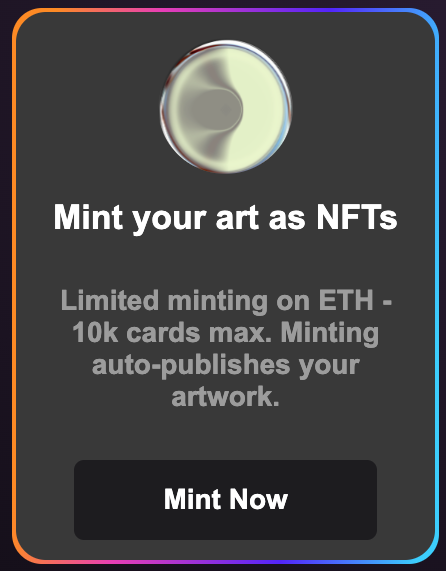Imagine a picture in your head. Make it as weird or as specific as you want it to be. Go really wild with it. Jesus in the Just Dance game. Mickey Mouse under an electron microscope. A portrait of a medieval dog-king.
If you can imagine it, chances are an AI art generator can create it.
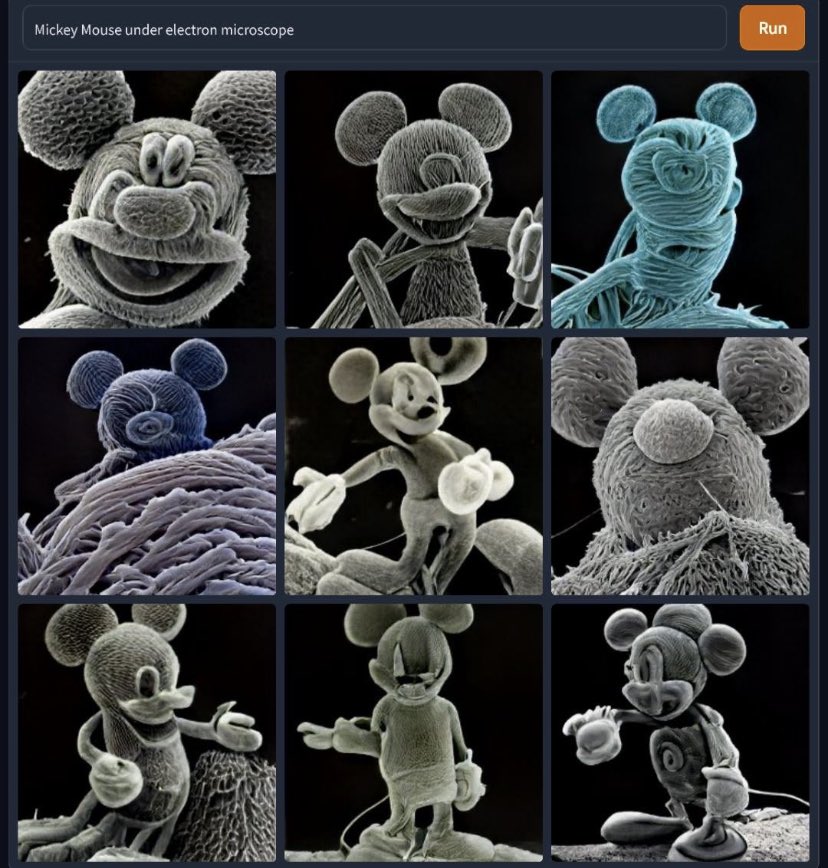
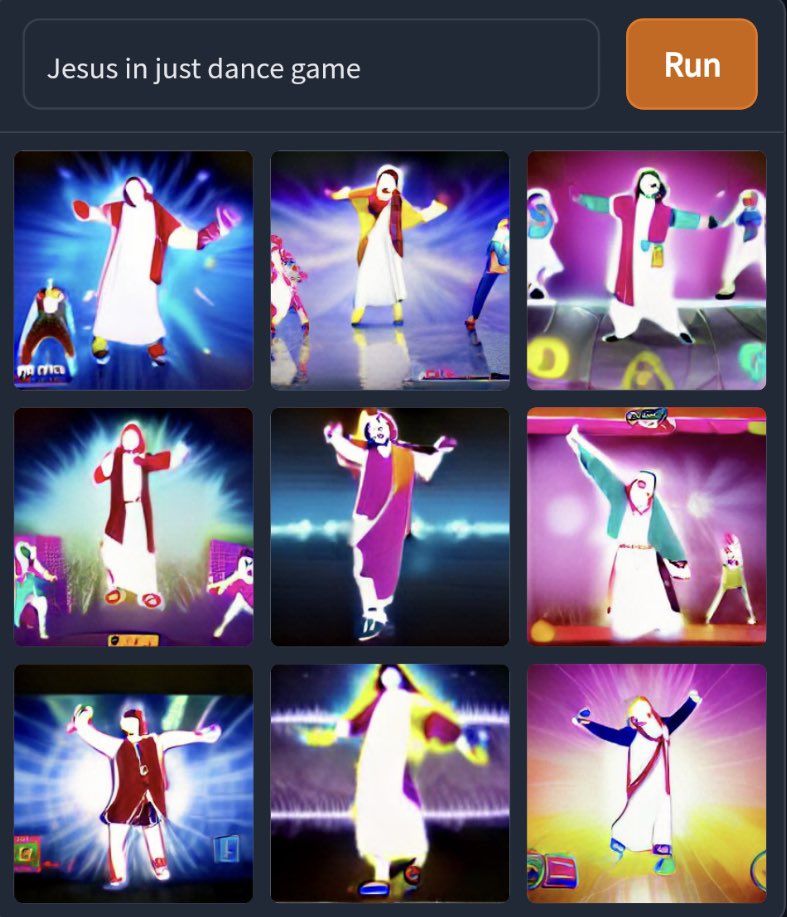
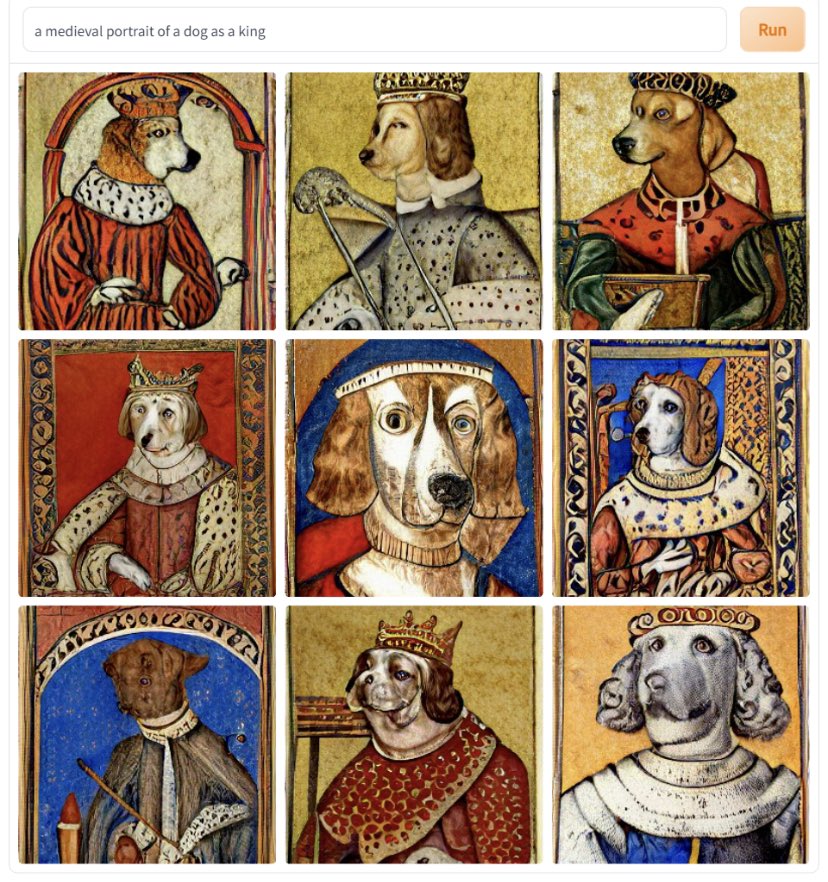
In an already image- and meme-driven internet, these AI art bots have fit seamlessly into its culture. Even the uninitiated may have heard of the DALL-E bot by OpenAI, or seen its creations floating around Instagram or Twitter. These generators are generally text-to-image converters that draw on mystical AI forces to create images that can be as uncannily realistic as they are goofy.
But their influence is already expanding beyond the internet. The first AI art creation — a french ‘portrait’ collaboration between two artists and their AI — was sold at a Christie’s auction for a jaw-dropping $432,500.
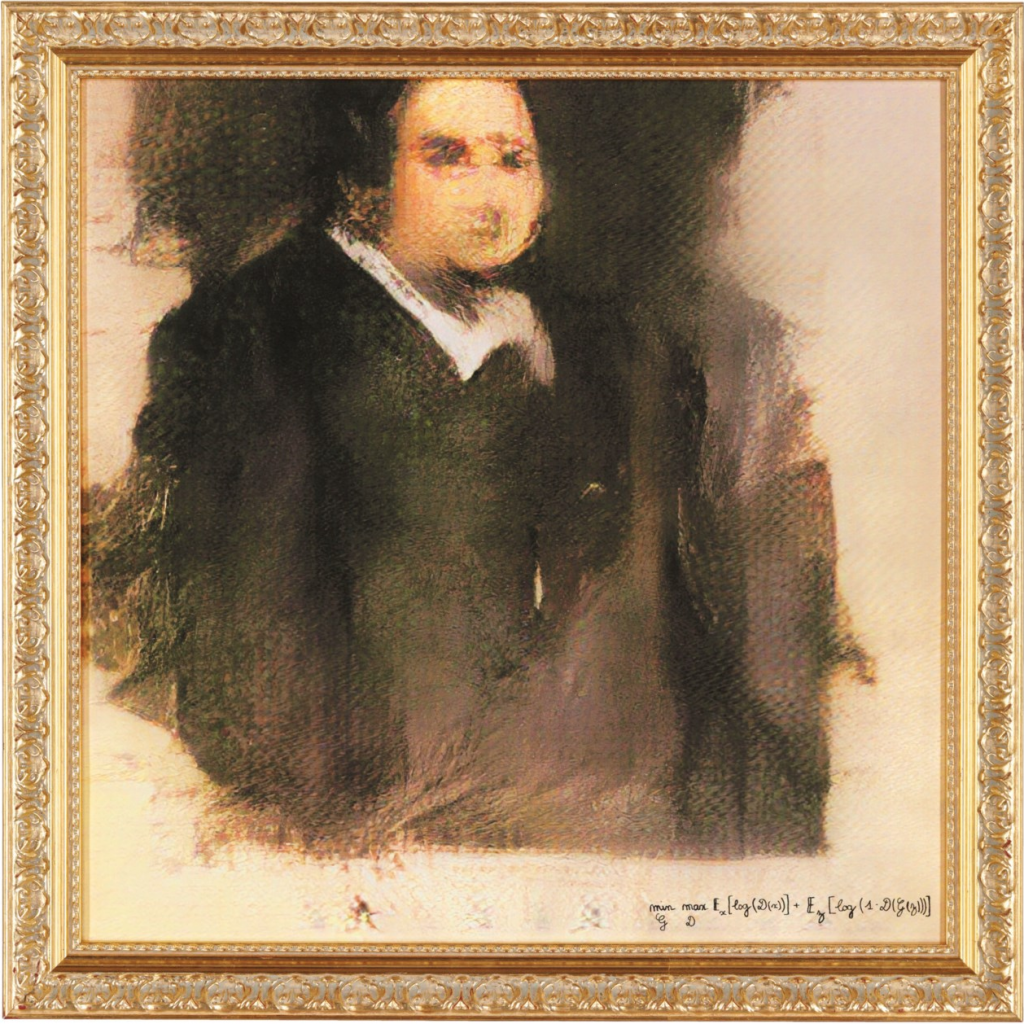
Like most new tech these days, it raises more questions than it solves. Philosophical dilemmas about what ‘art’ truly is and who can create it, lead to even scarier existential questions about where the human stops and AI starts. Considering the permeation of AI Art into the highest and lowest of cultural spaces, a basic understanding becomes general knowledge.
How Do AI Art Generators Work?
Any AI Art generator is a neural network. It is a set of algorithms fed to a computer to allow it to solve problems and generate outputs. The cool thing about an AI algorithm is that it doesn’t follow preset rules but ‘learns’ its own rules by analysing data fed into it.
Basically, before you can have an image output, an AI art generator needs lots of input. This is pre-curation — the AI is exposed to thousands of images from all across different archives like the internet, museums etc. and allowed to learn the aesthetic conventions of many different kinds of art. The more input, the more art styles the AI will eventually be able to emulate, and with greater accuracy.
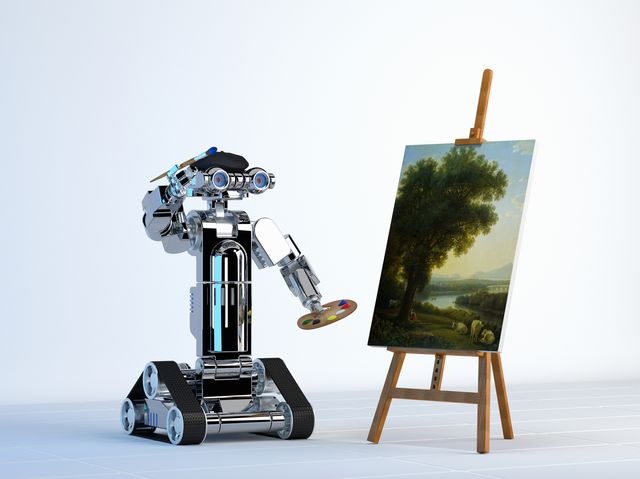
This doesn’t mean immediate accuracy, though, even for AIs bolstered by heavy computing power. The complexity of generating art requires a network of algorithms to realise. Most AI generators use GANs or Generative Adversarial Networks to create their output. Basically, one side generates random images surrounding the text prompt, the next side compares these images to its databases and judges which ones fit the prompt the best. At first, this ‘post-curation’ process has to have a human hand in it, to allow the AI to emulate judgement.
For example, an AI art generator like ‘Craiyon’ would have been fed millions of images in the ‘pre-curation’ stage, spanning the NASA image library to the greatest works of Van Gogh from museum archives. Eventually, it would pick up on the brushstrokes that made a painting a Van Gogh, and the average look of a NASA image. Then, if someone were to ask it to create a “hubble space telescope image in the style of van gogh” it would create the following:
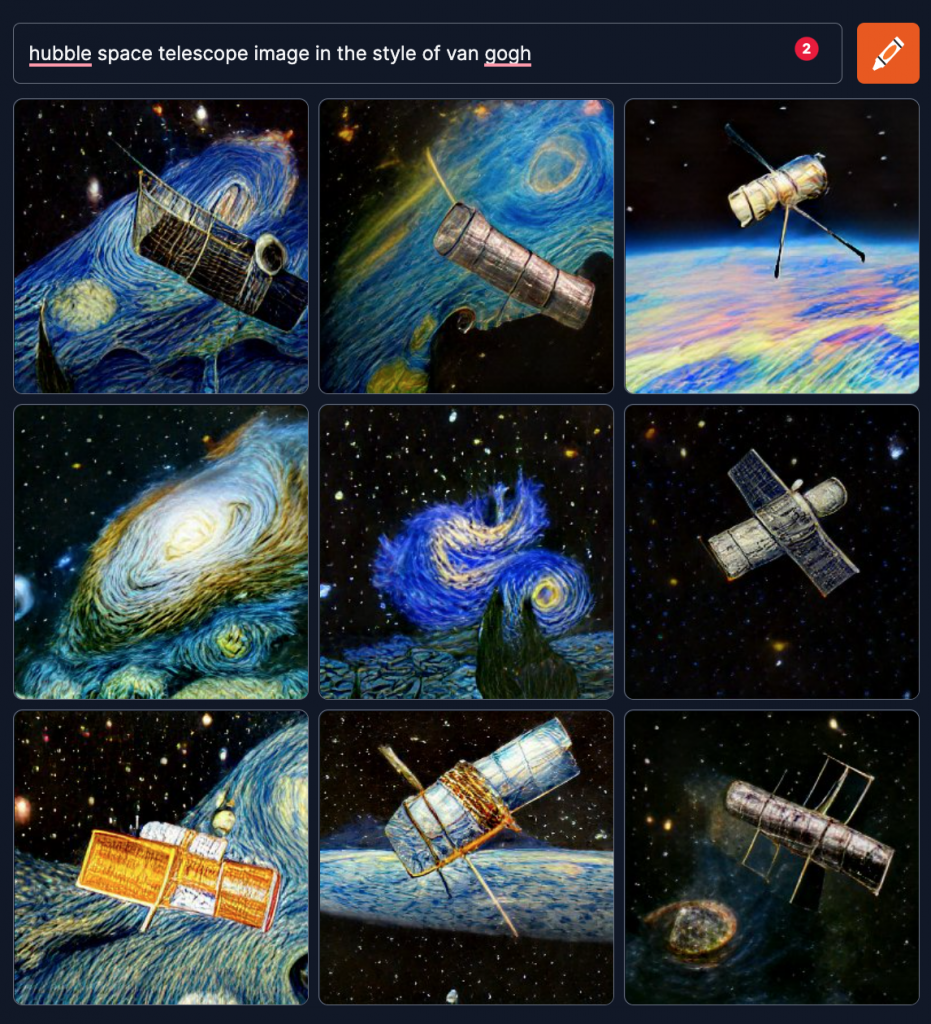
What’s Out There?
With much of the software being open-source and the AI itself requiring lots of input and output, there are many publicly available AI Art generators:
- Craiyon (formerly known as Dall-E mini)
- Wombo Dream
The sudden and high demand means some are behind waitlists now
- Including the famous Dall-E 2
- Midjourney
- American Scientist’s AICAN
The craze has also led tech giants Meta and Google to develop their own answers to AI art — Make-A-Scene and Imagen (neither publicly available yet).

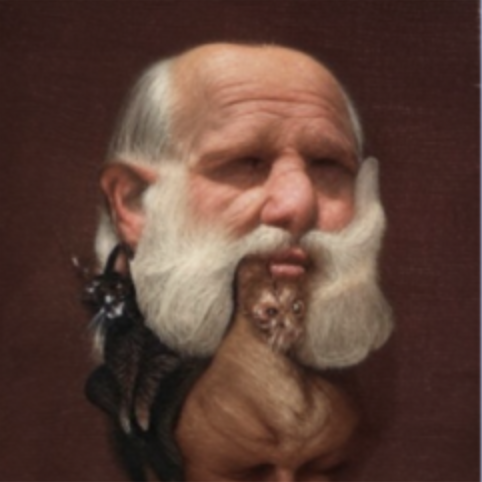
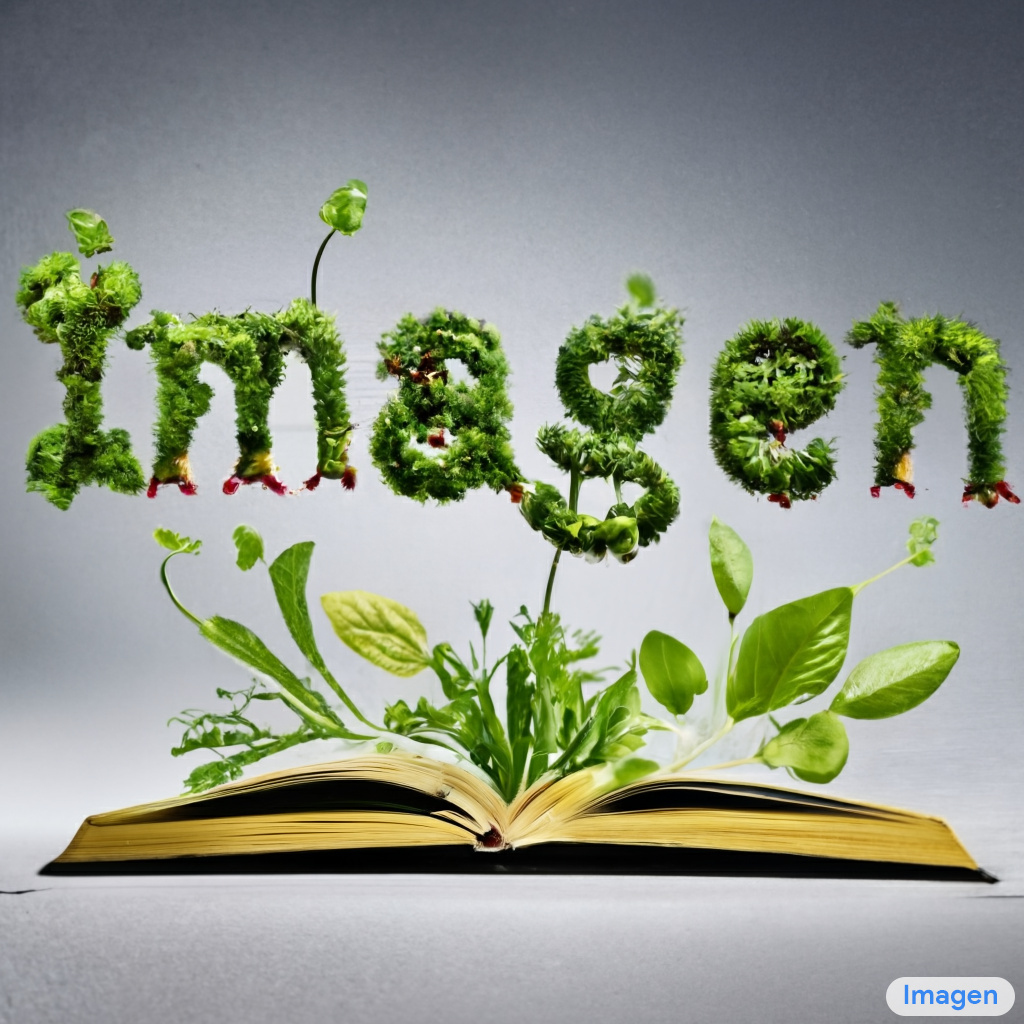
The phenomenon is new, and only growing with many developers and bots creating a variety of AIs with their own capacities and styles — ranging from cartoony to photorealistic 4K.
Why Is Anyone Into This?
As with NFTs, the expansion of new technology into the sphere of art and popular culture raises lots of questions and eyebrows. Just like NFTs were one tangible, popular expression of more significant underlying technology — the blockchain — so is AI art. From the early days of technological progress, the question of Artificial Intelligence has been at the forefront of imaginations and experiments. From Hawking to Asimov, whether it’s science or science fiction, AI has always been The Next Step.
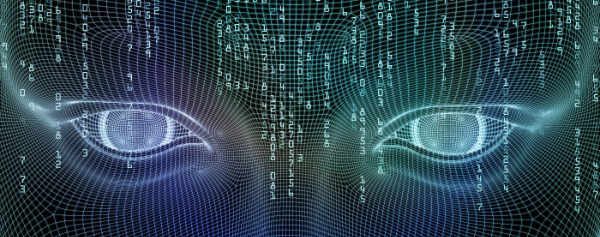
Getting algorithm networks to the level of human intelligence, however, is obviously a humongous task. Its asks are as wide-ranging as they are difficult. However, one of the most important parameters for the success of an AI has been its ability to understand and respond to human language. This is why passing the Turing Test — an AI’s responses to a human being indistinguishable from another human’s — has had so much prominence in the tech field and outside.
AI art, then, particularly text-to-image AI art becomes an excellent metric of how AIs are able to understand and respond to human language. For the AI, venturing into art allows it to grasp subjectivities, nuances, and cultural references in human language. For developers, it becomes an easy, intuitive way to check the success of the AI’s output. For the general public, it’s just plain delightful.
Beyond the inevitable grinding forward of technological progress, AI art does signal some important changes.
How Will AI Art Change Things?
AI art generators have enlivened long-standing philosophical discussions like “What is art?” or “Can only humans make art?”. The seeming unprecedented ness of AI could make one spiral into almost unanswerable questions of personhood, however, there is some historical precedent — the camera. When the digital camera was created and popularised, it sparked the same debates before eventually being folded into Art As We Know It as photography — a medium, a tool, a specialisation.
AI art generators and the technology that underlies them offer the same opportunity to existing and new artists alike. Code and algorithms become a new medium to create visual art in the same way that film roll did. And although one could argue that “The AI does all the work!”, anyone who has spent time tinkering with these generators knows that choosing the right prompt is its own art. The need for a guiding creative vision, a knowledge of artistic vocabulary, and a knack for combining elements are still needed. Creativity is still needed. It can just be applied in new ways.
However, with AI art auctions, and art fairs, there’s no denying this isn’t some insignificant trend. And there’s money in the market — AI art sells for hundreds of thousands of dollars and almost every engine allows you to mint your creation as an NFT for a fee. Its accessibility, customizability, and weirdness have awakened a whole new audience to visual art and the art market.
